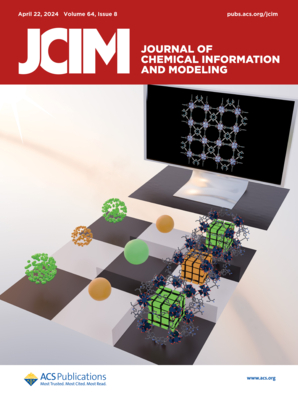On the Difficulty to Rescore Hits from Ultralarge Docking Screens.
IF 5.3
2区 化学
Q1 CHEMISTRY, MEDICINAL
引用次数: 0
Abstract
Docking-based virtual screening tools customized to mine ultralarge chemical spaces are consistently reported to yield both higher hit rates and more potent ligands than that achieved by conventional docking of smaller million-sized compound libraries. This remarkable achievement is however counterbalanced by the absolute necessity to design an efficient postprocessing of the millions of potential virtual hits for selecting a few chemically diverse compounds for synthesis and biological evaluation. We here retrospectively analyzed ten successful ultralarge virtual screening hit lists that underwent in vitro binding assays, for binding affinity prediction using eight rescoring methods including simple empirical scoring functions, machine learning, molecular-mechanics and quantum-mechanics approaches. Although the best predictions usually rely on the most sophisticated methods, none of the tested rescoring methods could robustly distinguish known binders from inactive compounds, across all assays. Energy refinement of protein-ligand complexes, prior to rescoring, marginally helped molecular mechanics and quantum mechanics approaches but deteriorates predictions from empirical and machine learning scoring functions.关于从超大对接屏幕重获命中的难度
据报道,与传统的百万级化合物库对接方法相比,基于对接的虚拟筛选工具可以获得更高的命中率和更强的配体。然而,为了选择几种化学上不同的化合物进行合成和生物评价,必须对数百万种潜在的虚拟命中设计一种有效的后处理方法,这就抵消了这一了不起的成就。在此,我们回顾性分析了10个成功的超大型虚拟筛选命中列表,并进行了体外结合试验,使用8种评分方法(包括简单经验评分函数、机器学习、分子力学和量子力学方法)进行了结合亲和力预测。虽然最好的预测通常依赖于最复杂的方法,但在所有的分析中,没有一种测试的评分方法可以可靠地区分已知的结合物和非活性化合物。在评分之前,蛋白质配体复合物的能量精化略微帮助了分子力学和量子力学方法,但恶化了经验和机器学习评分函数的预测。
本文章由计算机程序翻译,如有差异,请以英文原文为准。
求助全文
约1分钟内获得全文
求助全文
来源期刊
CiteScore
9.80
自引率
10.70%
发文量
529
审稿时长
1.4 months
期刊介绍:
The Journal of Chemical Information and Modeling publishes papers reporting new methodology and/or important applications in the fields of chemical informatics and molecular modeling. Specific topics include the representation and computer-based searching of chemical databases, molecular modeling, computer-aided molecular design of new materials, catalysts, or ligands, development of new computational methods or efficient algorithms for chemical software, and biopharmaceutical chemistry including analyses of biological activity and other issues related to drug discovery.
Astute chemists, computer scientists, and information specialists look to this monthly’s insightful research studies, programming innovations, and software reviews to keep current with advances in this integral, multidisciplinary field.
As a subscriber you’ll stay abreast of database search systems, use of graph theory in chemical problems, substructure search systems, pattern recognition and clustering, analysis of chemical and physical data, molecular modeling, graphics and natural language interfaces, bibliometric and citation analysis, and synthesis design and reactions databases.

 求助内容:
求助内容: 应助结果提醒方式:
应助结果提醒方式:


